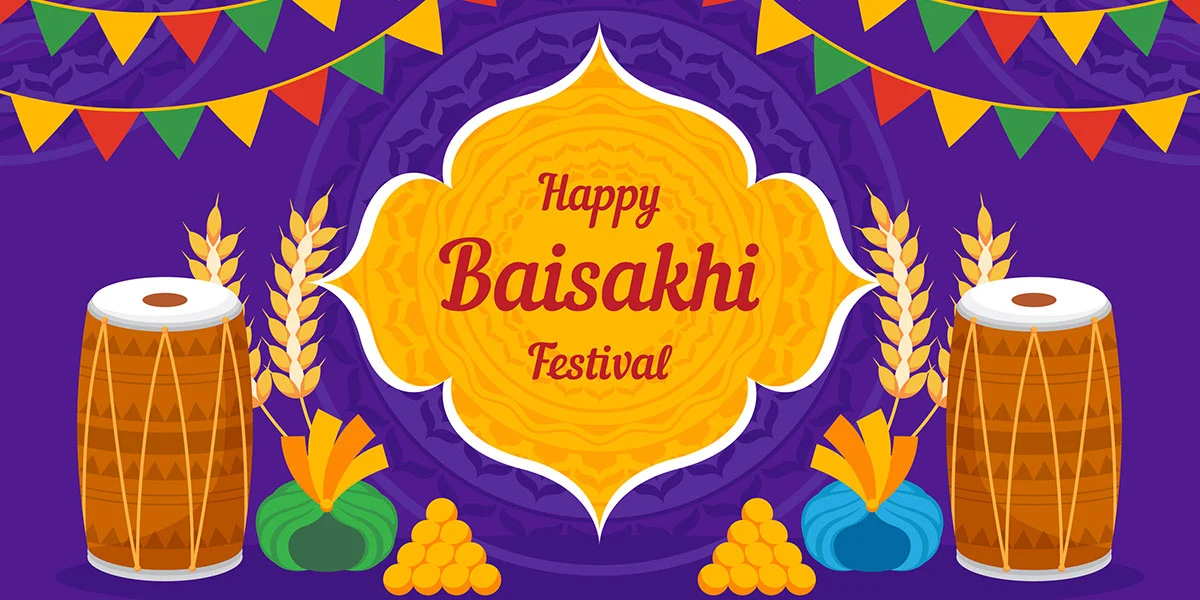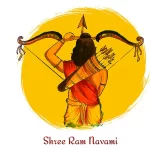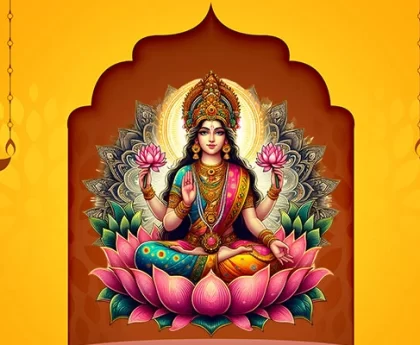Baisakhi, also known as Vaisakhi, is a harvest festival celebrated primarily in the Punjab region of India and Pakistan. It marks the Sikh New Year and commemorates the formation of the Khalsa Panth, the community of baptized Sikhs, in 1699 by Guru Gobind Singh, the tenth Sikh Guru.
Baisakhi falls on April 13 or 14 each year, according to the Nanakshahi calendar, which is used by Sikhs. It holds great cultural and religious significance for Sikhs and Punjabi Hindus.
The festival is celebrated with fervor and enthusiasm. People visit gurdwaras (Sikh temples) for prayers and participate in Nagar Kirtan processions, which involve singing hymns and performing Gatka (Sikh martial arts). Community meals known as langar are also organized where everyone, irrespective of caste, creed, or religion, is welcome to partake in a communal meal.
Apart from its religious significance, Baisakhi also marks the beginning of the harvest season in Punjab, and farmers celebrate the occasion by thanking God for the abundant harvest and praying for future prosperity. Traditional folk dances like Bhangra and Gidda are performed, adding to the festive atmosphere.
In addition to India and Pakistan, Baisakhi is also celebrated by Sikh and Punjabi communities around the world. It serves as a reminder of the rich cultural heritage and the spirit of unity and community among the people of the Punjab region.

Baisakhi holds significant importance for various reasons:
- Religious Significance: Baisakhi marks the establishment of the Khalsa Panth by Guru Gobind Singh in 1699. On this day, Guru Gobind Singh baptized Sikhs and founded the order of the Khalsa to uphold Sikh values, defend righteousness, and fight against injustice. It signifies the birth of the Sikh community as a distinct entity.
- Cultural Celebration: Baisakhi is not only a religious festival but also a cultural celebration. It marks the beginning of the harvest season in Punjab, a region largely dependent on agriculture. It is a time for farmers to celebrate the fruits of their labor and thank the divine for the bountiful harvest.
- Unity and Brotherhood: Baisakhi fosters a sense of unity and brotherhood among people, particularly Sikhs. It is a time when people come together to pray, share meals, and participate in communal activities like Nagar Kirtan processions and langar (community kitchen). It promotes solidarity and reinforces the importance of community bonds.
- Historical Remembrance: Baisakhi also serves as a day to remember and honor the sacrifices made by Sikh martyrs and the struggles endured by the Sikh community throughout history. It is a time to reflect on the teachings of the Sikh Gurus and to draw inspiration from their courage, resilience, and commitment to justice and equality.
- Cultural Heritage Preservation: Celebrating Baisakhi helps preserve and promote Punjabi culture and heritage. Traditional folk dances like Bhangra and Gidda are performed, and Punjabi cuisine is enjoyed during the festivities. It serves as a reminder of the rich cultural diversity of the region and strengthens cultural identity among the people.
Key rituals associated with Vaisakhi:
- Visiting Gurdwaras: Sikhs start the day by visiting gurdwaras (Sikh temples) to attend special prayers and congregational services. The Guru Granth Sahib, the holy scripture of Sikhism, is ceremonially bathed with milk and water, symbolizing purity and reverence.
- Nagar Kirtan Procession: Nagar Kirtan, meaning “town hymn singing procession,” is a prominent feature of Vaisakhi celebrations. It involves the procession of the Sikh holy scripture, the Guru Granth Sahib, along with singing of hymns and chants. Devotees participate in the procession, which moves through the streets, spreading joy and blessings.
- Baptism Ceremony: Vaisakhi is considered an auspicious day for Sikhs to undergo the Amrit Sanchar, or baptism ceremony, to become initiated members of the Khalsa Panth. During this ceremony, individuals who wish to join the Khalsa undergo a series of rituals, including the recitation of prayers and the drinking of Amrit (sweetened water) from the same bowl, symbolizing unity and brotherhood.
- Community Service – Seva: Seva, or selfless service, holds significant importance in Sikhism. On Vaisakhi, devotees engage in various acts of seva, such as preparing and serving langar (community meals) in gurdwaras, cleaning the premises, and offering assistance to those in need. Seva is considered a form of devotion and a way to practice the teachings of equality and compassion.
- Cultural Performances: Vaisakhi celebrations are accompanied by vibrant cultural performances showcasing traditional Punjabi music, dance, and martial arts. Bhangra and Gidda dances are popular during these festivities, reflecting the joy and energy of the occasion.
- Feasting and Celebrations: Vaisakhi is a time for feasting and merry-making. After attending religious ceremonies and performing seva, families and communities come together to enjoy delicious traditional Punjabi cuisine. Special dishes like sarson da saag (mustard greens) and makki di roti (cornbread) are prepared to celebrate the harvest season.
These rituals and practices vary in their observance depending on regional customs and individual beliefs but collectively contribute to the festive and spiritual ambiance of Vaisakhi celebrations.
Overall, Baisakhi is a multifaceted festival that encompasses religious, cultural, historical, and social significance. It is a time of joy, reflection, and renewal, symbolizing the spirit of unity, gratitude, and resilience.
Other Indian Festivals





